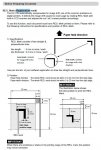okay, so, what amount of bleed does he think is 'normal' ?
- 0.0625 on each side ?
.25 on each side ?
No bleed ? Seriously - If I am doing a poster - or art print - that will be canvas wrapped I might request 4 inches bleed on each side. There is no "standard".
Years back, when Time Inc began considering accepting digital ads ( this was even BEFORE PDF ) the published specification. When I worked as the product Marketing manager at AGFA for Apogee version 1, we had to provide imposition tools ( via an OEM version of Preps ) so, we needed bleed and trim defined. But when time published the specification that their advertisers submitting ads needed to follow, they asked RRD ( now printed by Meridith ) for help.
Today, that is all published on line ( ask your designer friend if her ever had to prepare an add for Sports Illustrated ) - LOL - yeah, I will not hold my breath...
http://www.direct2time.com/title/sports illustrated/#mechanicals
so, looking at a full bleed add, submitted to Time Inc. for a full page add - that is 8.125 x 10.75 bleed - 7.875 x 10.5 trim - so, .125 bleed on each side
So ef this designer guy.
I was part of the team from AGFA and DDAP (Gary Cosimini was there from Adobe, Alan Darling represented DDAP ) that presented this to the Ad Agencies and Printers on behalf of Time Inc at their headquarters ( back then it was Time Warner ) this was when they first announced they were no longer accepting film, would accept TIFF/IT-P1 files for a short time, but would ONLY accept PDF/X-1a file by June 1st 2001
And yeah, the 'specification" for ALL times titles was .125 bleed on all sides.
So, okay tell your close personal friend to shut his pie hole.












